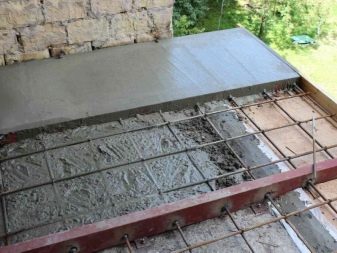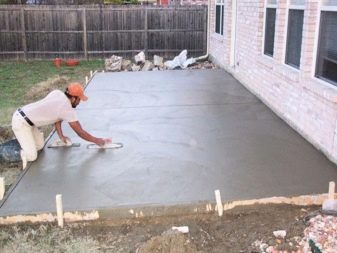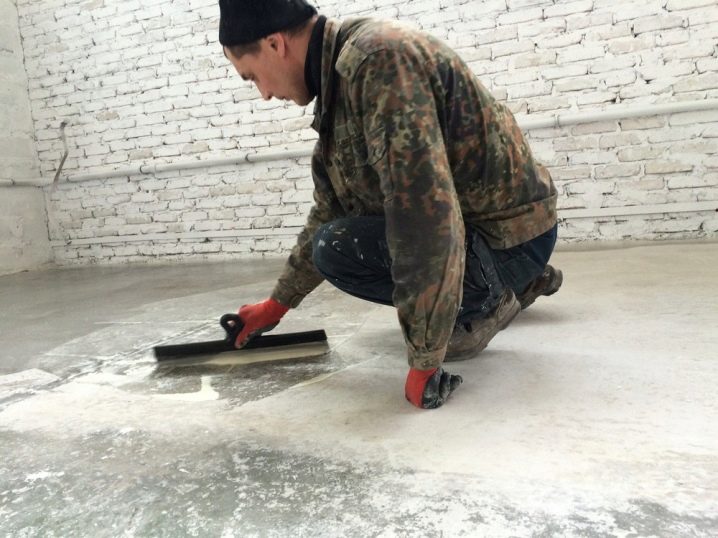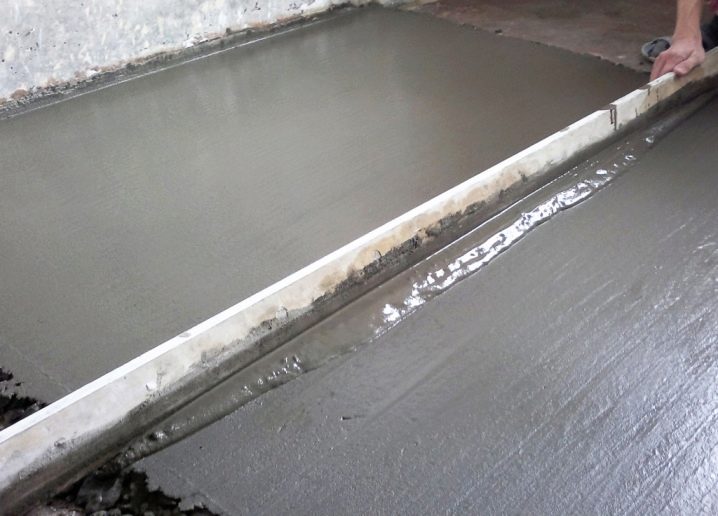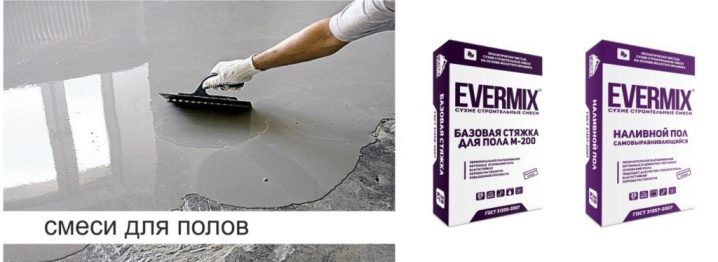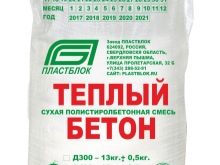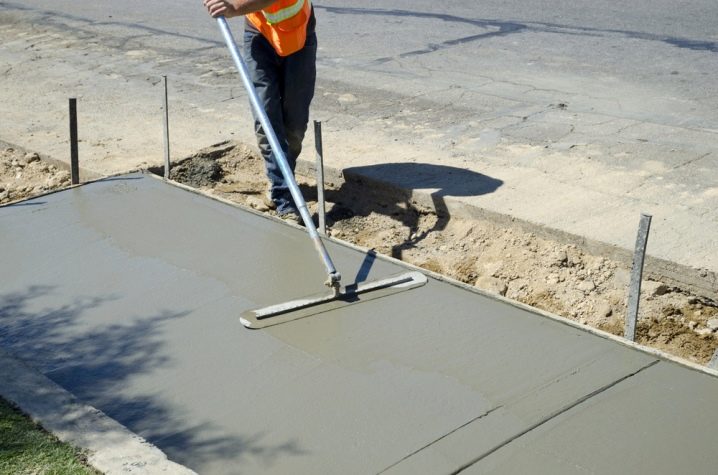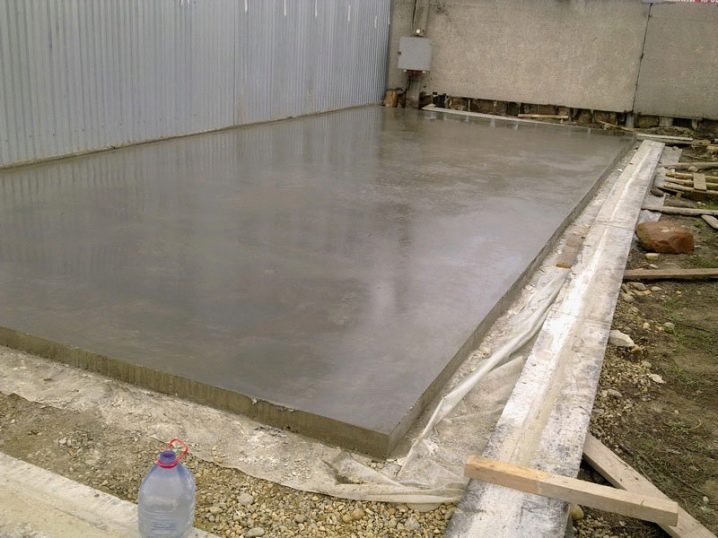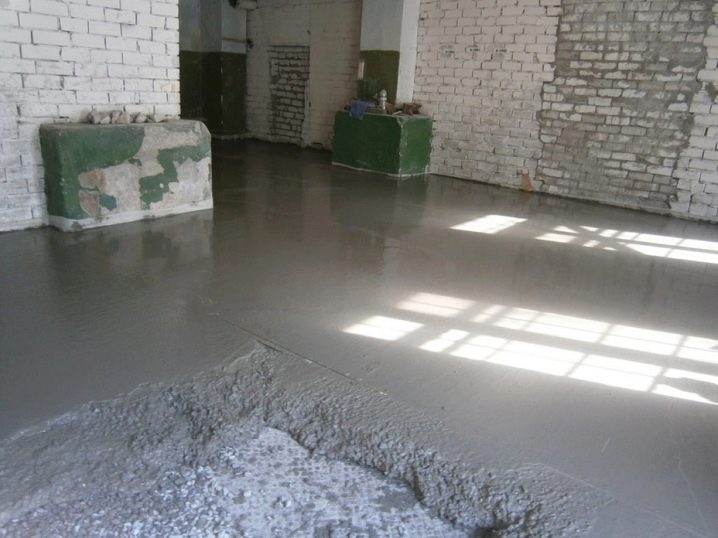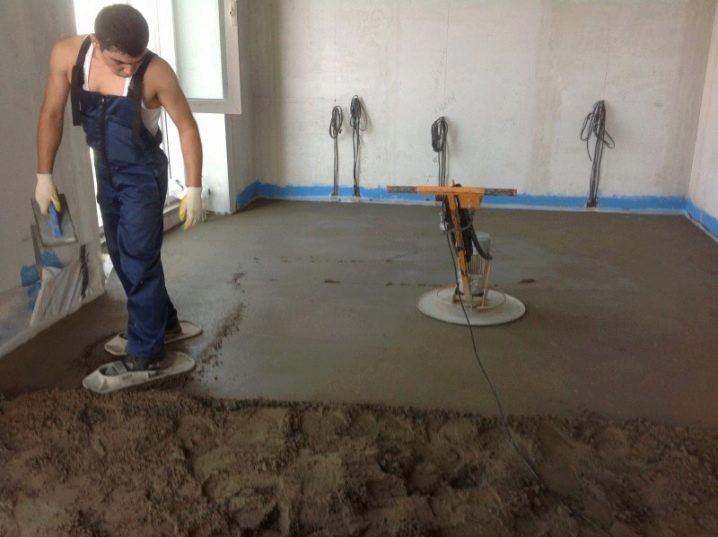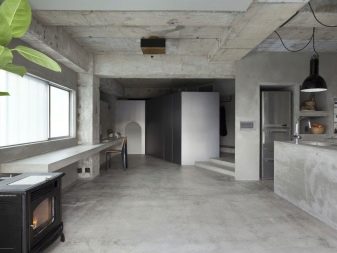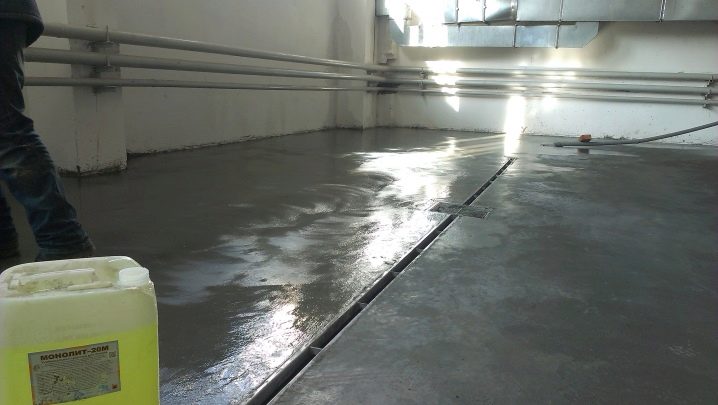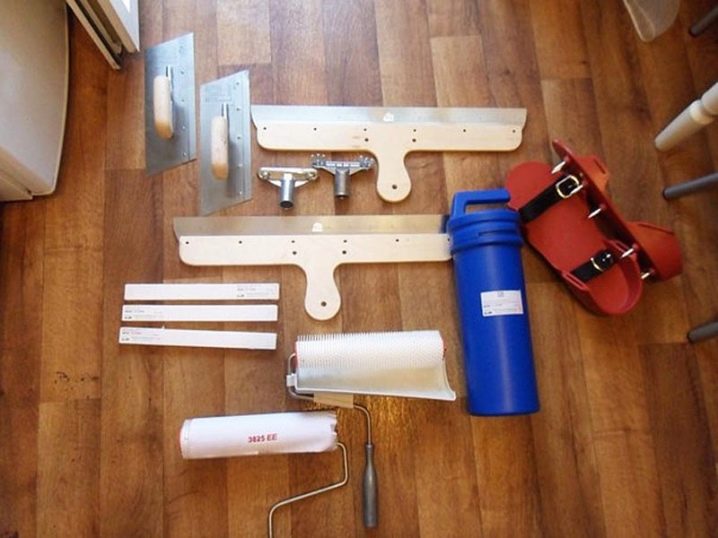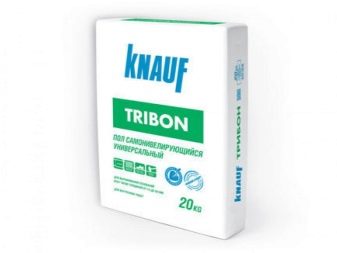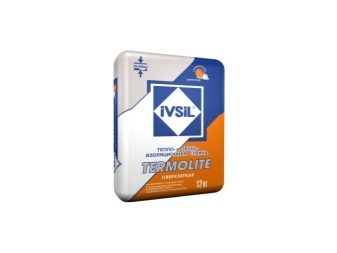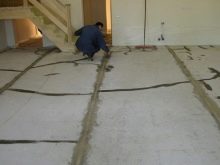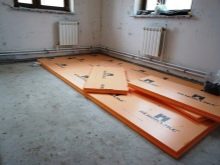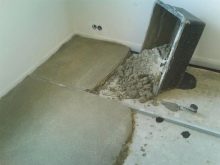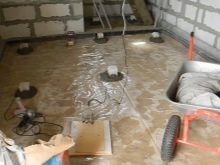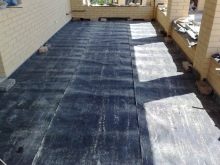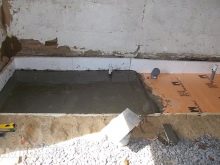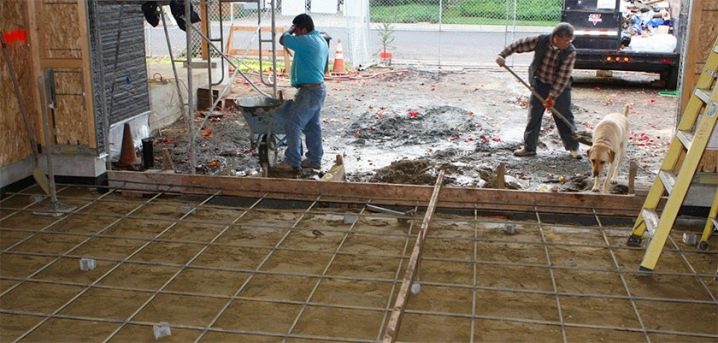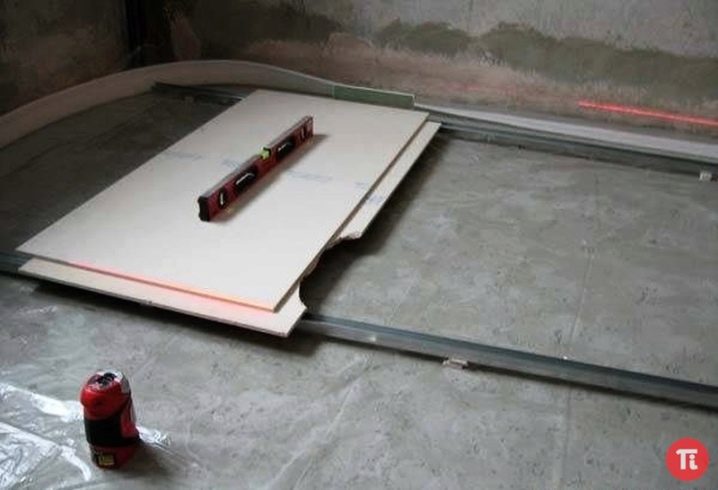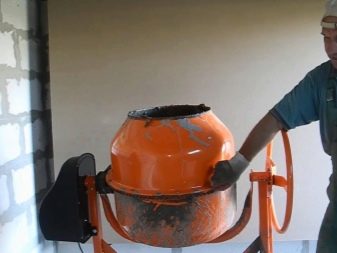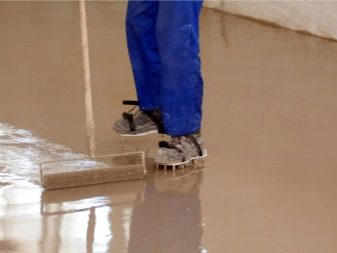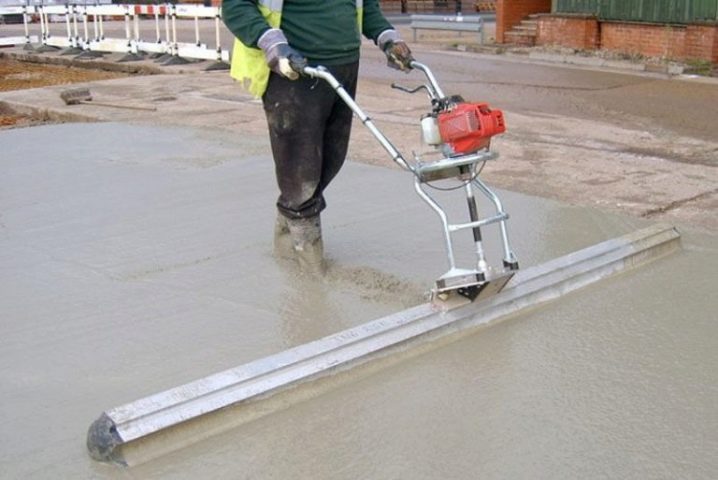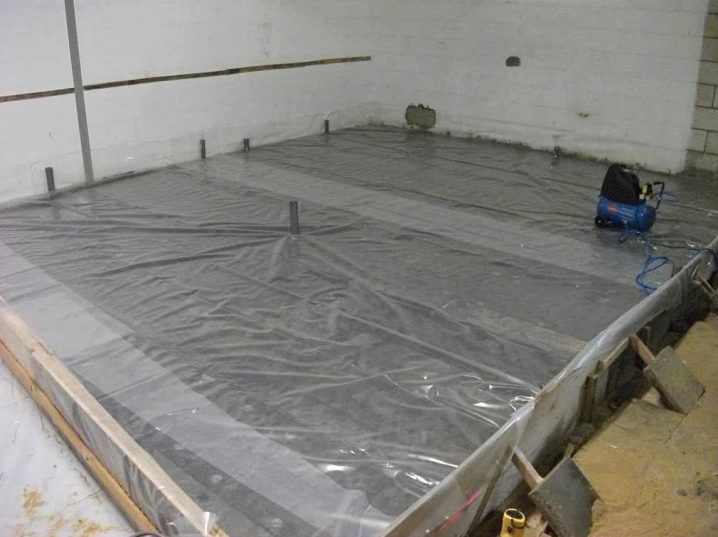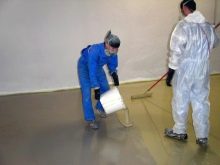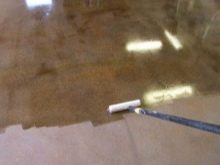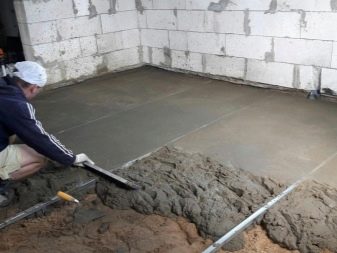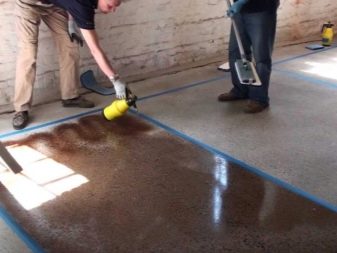Features and methods of pouring concrete floor
Concrete is a material that is widely used in construction, in particular, for flooring in residential buildings, apartments and industrial premises for various purposes. This material is universal, when working with it you do not need to possess special skills, as well as technically sophisticated construction equipment.
However, if the laying of such a floor is not followed, it will not be possible to obtain a high-quality coating that has all the necessary advantages. Therefore, it is important to know the technology of the self-leveling concrete device and to strictly follow the sequence of actions.
Types and characteristics
Depending on the device of concrete floors there are their following versions:
- single layer - no more than 25 cm thick, the most frequently used option for apartments in multi-storey panel houses;
- multilayer - are filled in several stages and consist of two or more layers. Very often, this type of concrete floors carry out the restoration of floors;
- reinforced - the most durable of all concrete floors. High wear resistance is achieved through the use of special metal rods, mesh or synthetic fibers, which strengthen the coating and reduce its thickness. It is used for rooms in which the floor is subjected to heavy load - hangars, warehouses, car parks;
- unreinforced - used in low-rise construction in saunas, garages, bathhouses and household frame buildings, where the load on the floor is small. Differ in simplicity of filling and low cost.
Depending on the binder in the composition of the self-leveling concrete floor, several types of mixtures are used:
- Cement - universal, can be used in any premises. They are smooth, moisture-proof, dry quickly. They are used as a base for decorative coating - laminate, tile, linoleum and parquet, and very rarely act as a finishing coat.This is due to the fact that concrete floors are not resistant to the effects of abrasives, alkalis, acids and mechanical stress.
- Polymer concrete (polyurethane) - synthetic mixtures that are characterized by high strength and minimal shrinkage. Widely used in hospitals, office buildings, garages, covered parking, entertainment centers and cinemas. This is a multilayer material, which consists of three layers. The top one is finishing, with the possibility of applying 3D and mosaic-spaced images, the middle one consists of high-strength polymers, the durability of the coating depends on it, and the bottom one impregnates, which ensures the adhesion of the self-leveling floor with most materials (wood, concrete, ceramics).
- Polystyrene concrete - it is lightweight porous mixtures. This structure is achieved by adding to the composition of the granular filler - polystyrene. It has excellent sound insulation, small fire.
In industrial premises with harsh operating conditions of the floor covering, concrete with heavy fillers (cement, polymer concrete) should be used, and a mixture of polystyrene concrete can be used for floor installation in residential premises.
Device
In order for the concrete floor to turn out to be of high quality, wear-resistant and to meet all the requirements for a flooring, you should use quality materials and follow the sequence of installation works.
Bulk mixes can be installed on:
- cement concrete base;
- open ground.
In the first variant, the foundation for the future floor is prepared first, the gap defects are closed, then the concrete screed is laid. After that, the surface is treated with a finishing compound, the seams are cut and sealed, and, if necessary, a decorative composition is applied.
When constructing self-leveling floors on the ground, more difficulties arise as the technology differs from laying the mixture on the ground.
Important! A well-executed open-floor floor has a layered structure and, despite the laboriousness of pouring it, can save money.
Typically, the bulk concrete floor to the ground is as follows:
- compacted soil at the base;
- sand pillow;
- crushed stone or expanded clay;
- waterproofing;
- concrete screed;
- heat insulation;
- insulation;
- finishing reinforced screed.
Be sure to take into account the dryness of the soil, its mobility and groundwater level. This floor is used only in those premises where heating is provided in the autumn-winter period, which allows to reduce the depth of soil freezing and, as a result, the deformation of the floor covering.
For wet rooms, for example, for a bathroom, before filling floors, a waterproofing substrate is used, which prevents moisture from affecting the substrate. Its thickness, as a rule, is not more than 0.2 mm.
Advantages and disadvantages
Concrete self-leveling floors have pros and cons, which are dictated by the properties of the material from which they are made.
The positive points include:
- high strength;
- sufficient rigidity of the coating;
- resistance to aggressive substances;
- long service life;
- environmental friendliness;
- low cost of installation and materials;
- fire safety;
- ease of care;
- no slip on the surface;
- resistance to high humidity;
- low abrasion;
- resistance to severe mechanical stress.
It is these properties that make it possible to use concrete floors not only in residential premises, but also in industrial and public buildings,where the load is significantly different from that in an apartment or a wooden private house. Moreover, thanks to the addition of synthetic materials to concrete, it became possible to use such self-leveling floors in the interior as the main coating, without laying laminate, parquet or linoleum on them.
Modern impregnations can improve the performance of concrete floors, so that they do not gather dust, do not need additional insulation.
The disadvantages include the following:
- the difficulty of removing the concrete floor - dismantling takes a lot of time;
- a long preparatory stage consisting of a whole complex of sequential actions;
- Some polymer concrete floors are not environmentally friendly, they can produce harmful volatile substances.
When choosing a mixture to fill the floor should be correlated pros and cons with the requirements that apply to the flooring. Many modern materials are able to serve 10 or more years, while maintaining a high decorative effect, so their choice should be taken responsibly.
Mixtures and tools
For the installation of the floor in the room will require the following devices and materials:
- selected pre-mix or sand, cement, crushed stone and water;
- building level;
- concrete mixer or mixer;
- the rule;
- lighthouse rake;
- half lter;
- sealant;
- glue;
- reinforcing mesh;
- trowel;
- roller;
- vibrating plate;
- jackhammer;
- construction mop;
- trowel;
- twine or long cord.
Among the special mixtures intended for flooring in the premises, the most popular materials are the following brands: Knauf, Ceresit, Ivsil, Bergauf.
- Knauf blends - one of the most popular, most often used to create a finishing coating. They spread well and dry quickly. In assortment - a wide choice of the most various mixes for creation of a bulk floor, the majority from which self-leveled.
- Self-leveling floors Ivsil They are represented by a large assortment, ranging from a simple tie and ending with finishing highly decorative mixtures, as well as the Thermolight line, which has excellent thermal and sound insulation properties.
- Among the mixes stamps "Bergauf" The most popular is the Easy Boden series, which even a beginner can use. The special composition allows smoothing irregularities up to 10 cm, and the mixture itself dries quickly and does not smell, so that all work can be carried out indoors.
- If it is important to reduce the cost of installation of self-leveling concrete floors, then you can use a mixture of Russian production brand "Hercules". They do not have distinct advantages, however, they will significantly reduce the budget allocated for flooring.
After all the materials and tools are prepared, you can begin to prepare, and then start concreting the floor.
Preparatory work
Before proceeding with the installation of a self-leveling floor, you should carefully prepare the surface on which the new coating will be installed.
If the concrete mix will be laid in the apartment, the sequence of actions is as follows:
- The old covering is under repair or dismantled. For this, the concrete floor is visually inspected for damage. If they occupy a small area, they are repaired using the selected mixture, after which the surface is treated with a primer. If the old floor is heavily damaged, then dismantle with a jackhammer. Then make a fill of the new base.
- If the humidity in the room is high, then a waterproofing layer is laid.In the apartment such rooms are usually a bathroom, toilet and kitchen.
- The layout of the premises is carried out, beacons are set up to simplify further work.
If the floor is poured in a private house on the open ground, the preparation stage increases and becomes more complicated and consists of the following steps:
- From the room in which the floor device will be held, construction waste is removed. Further markings are carried out on the walls and the zero level is determined.
- The top fertile layer is removed, the floor deepens 30-35 cm from the zero mark on the plaster walls.
- The earth is thoroughly packed. It is better to do this with a vibrator, but you can do it manually. If traces of footwear remain on the ground, then it is necessary to continue to tamp the soil. The distance from the ground to the marked “zero” is usually about 1/3 meter, but for houses with high strip or pile foundations this value increases.
- With the help of clay, a waterproofing layer is formed that will prevent the penetration of groundwater and waterlogging.
- The sand-gravel layer falls. It should be no more than 10 cm.In order not to exceed this size, you can use pegs with appropriate markings.
- At the final stage of soil preparation for pouring concrete floor, a layer of fine crushed stone is laid. This allows the surface to be leveled before installation. If you can not achieve an even layer, the gravel on top can be covered with a small layer of sand and carefully leveled.
- Next, lay a layer of waterproofing. For this can be used any modern material presented on the construction market.
- Heat and vapor barrier can be made of basalt fiber, expanded clay, polystyrene or polystyrene.
- Reinforcement is performed before pouring. This allows you to unload the base of the future floor and increase its strength. With the help of special supports reinforcement is raised by 2-3 cm.
After completing all the steps, you can proceed to the device guides and fill the floor.
How to make fill your own hands?
When the reinforcing structure is already installed, it is necessary to install guides along which the concrete floor will be poured. To do this, the room is divided into identical segments begin to install the formwork.
The segments into which the floor is divided by guides must be of such a size that will allow you to fill this area at a time.
To install the formwork using a level and metal or wooden bars, which are concreted at the base of the floor with cement. The upper part of the rails must coincide with the zero level of the floor, which is marked with twine. In order that guides can be easily removed after filling the floor, they are rubbed with oil.
In order to obtain a durable and durable coating, the mix for pouring concrete floor must be of high quality and fresh. Preparing concrete yourself is better to do with a concrete mixer. Sand, crushed stone, cement grade M 400 or M 500 is poured into it and the required amount of water is poured. After that, the solution is thoroughly mixed in a concrete mixer, poured onto the prepared map and carefully leveled with a shovel.
In order for extra air and concrete to come out, the formwork is well filled, it is often necessary to pierce the mortar with a shovel and stretch it over the surface. For these purposes, you can use a special vibrator.
After 2 cards are flooded, it is recommended to start leveling the surface of the concrete floor using the rule.To do this, it is placed between the two guides and move towards itself, while the excess solution flows into unfilled maps. So that the tool does not get stuck in the concrete, it is constantly moistened with water.
When all cards are aligned, the surface of the concrete floor is covered with polyethylene. After 3-4 weeks, the necessary hardness is achieved and you can proceed to the screed floor self-leveling. For these purposes, it is better to use ready-made mixtures that level irregularities themselves and create an ideal coating.
It is necessary to fill the screed from the farthest corner, gradually moving towards the door. The screed must be dried for 2-3 days, then you can apply a finishing layer of the self-leveling floor or proceed with the installation of linoleum, laminate or parquet.
In order for the floor to serve for a long time, it is necessary to carefully observe the technology and timing of work. This is a painstaking undertaking, but with due respect even a beginner can cope with the installation of a concrete self-leveling floor.
Dedusting: ways
During the operation of a concrete floor, a large amount of dust is emitted, which is a serious problem, especially in industrial premises.In order to eliminate such drawbacks, surface dust removal is widely used.
There are several ways:
- Drawing toppings. The process resembles ironing, but instead of cement, multicomponent mixtures are used, with the help of which grouting of the upper layer of the floor is carried out. This can be done both manually and with the help of special equipment. Thanks to the topping coating, the concrete surface becomes more durable, and the upper layer can be given different colors: yellow, dark blue, green, brown.
- Pouring polyurethane finish coating allows you to create a beautiful, hardened floor canvas and create protection from concrete dust. To apply this compound, the floor surface is first primed to get rid of air bubbles. The drying time of the polyurethane coating is about 12 hours.
- Use special impregnation. Dust processing on a concrete floor can be carried out using special formulations that penetrate deep into the material. To do this, the surface is pre-cleaned with a construction vacuum cleaner, impregnated with strips and smoothed with a brush or scraper.
Dusting dry concrete surfaces is difficult. This is a process that is better to be entrusted to professionals, since if the technology is violated, the coating will crack or begin to flake off without performing its direct function as a hardener.
Recommendations
For a concrete floor to serve for a long time, the following requirements should be met:
- the temperature in the room where the flooring works are carried out should be within +5 - + 250C;
- the concrete solution should not be too thick (the consistency should be similar to kefir) and should not contain air bubbles, therefore it is thoroughly kneaded before pouring;
- the flooded floor is moistened every day for 3–4 weeks until full “ripening” in order to prevent drying and cracking of the surface;
- cracks can be repaired with a putty or sealant, after which the floor surface is dried, primed;
- when working with some polyurethane compounds for the finishing layer, the formation of non-toxic, but strongly smelling substances is possible, therefore, work should be carried out in a room provided with good ventilation;
- for the device of heat shrinkable seams, the surface of the hardened concrete floor is made by milling, and drainage is inserted into the holes - foamed polyethylene;
- when flooring on open ground, the depth of groundwater should be at least 4-5 meters from the ground, otherwise they may damage the concrete pavement.
The concrete floor made with all the norms and recommendations will last for a long time and will retain its properties for the entire period of operation.
Pouring a concrete floor is a process that no residential or industrial building can do without. The self-leveling floor provides a durable, damage-resistant coating. The main thing is to choose the right materials and strictly follow the recommendations for the work.
How to pour concrete floor, see the following video.

